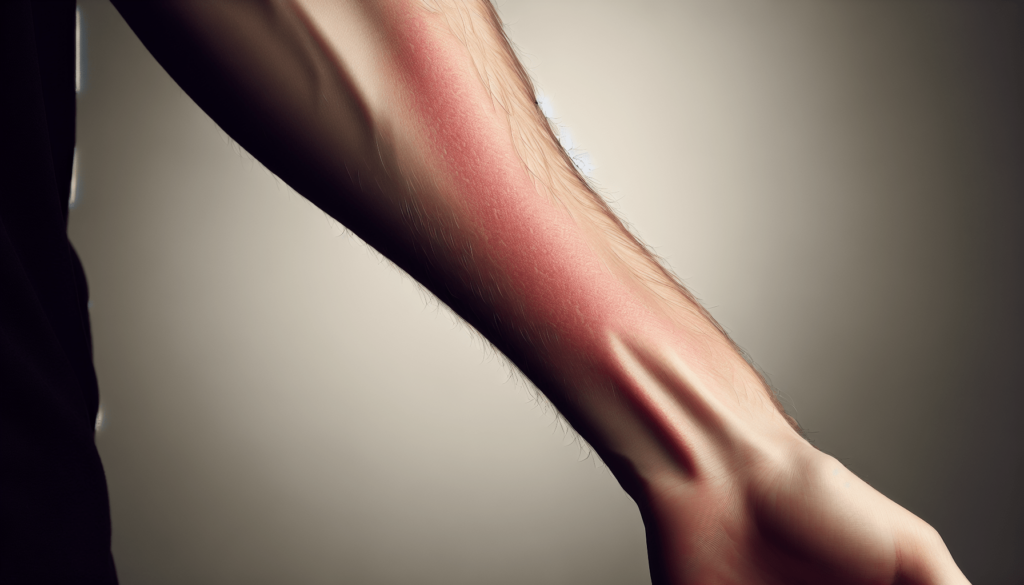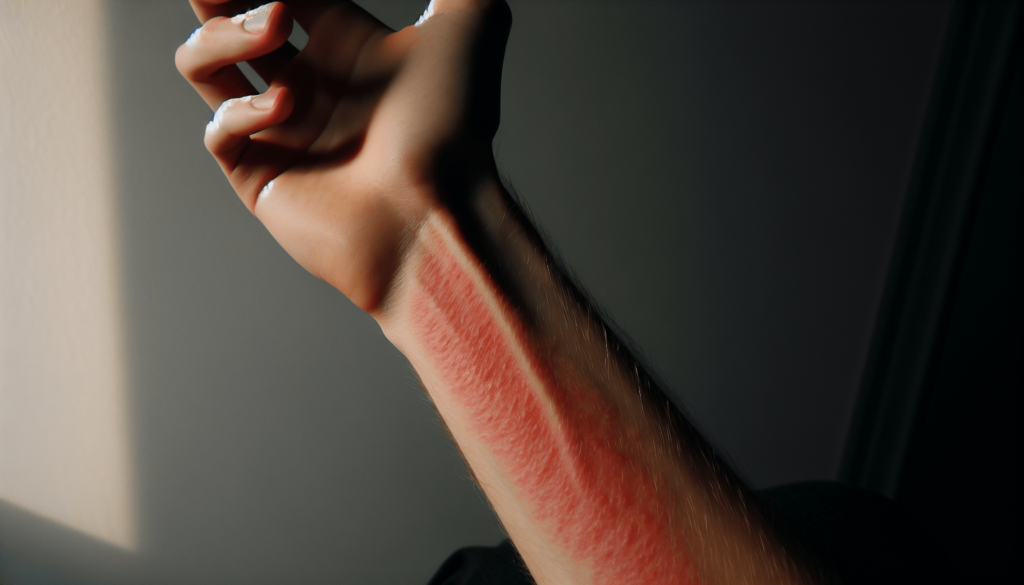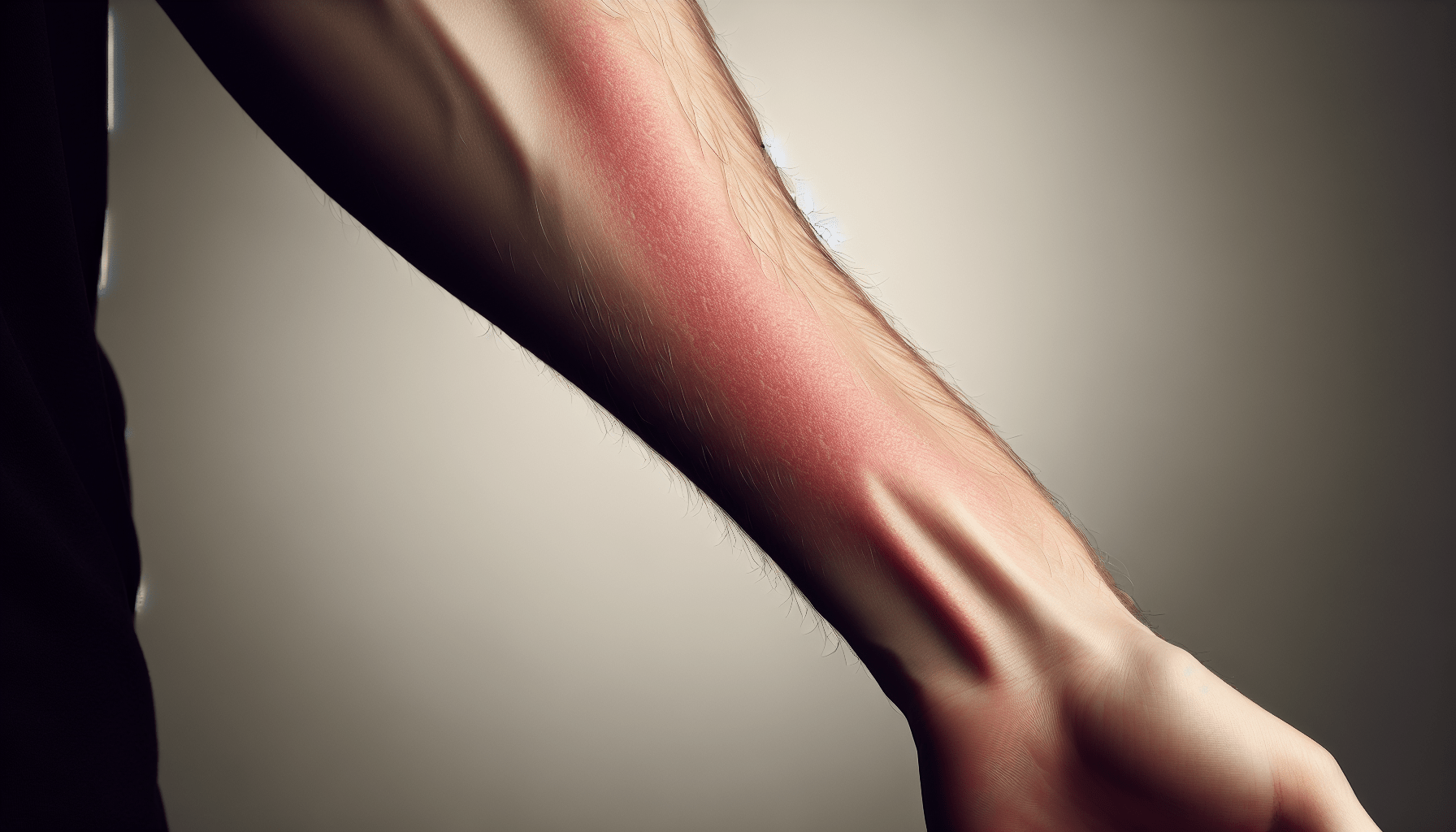If you’ve been dealing with an irritating skin rash, it’s possible that allergies could be the culprit behind it. Understanding how to determine if your skin rash is allergy-related can help you find relief and prevent future flare-ups. In this friendly guide, you’ll discover the most common allergens that cause skin rashes, learn how to identify allergy symptoms, and explore options for diagnosis and treatment. By the end, you’ll feel more confident in managing your skin’s health and knowing when to seek professional advice. Have you ever noticed a mysterious rash on your skin and wondered if it could be due to an allergy? Skin rashes can be frustrating, uncomfortable, and sometimes concerning, but identifying the root cause can help you manage and treat them effectively. Allergies are one of the common culprits behind those irritating rashes. This article will guide you through the process of determining if your skin rash is due to allergies and what steps you can take to address it.

Understanding Allergic Reactions
Before we dive into the details of identifying if your rash is due to allergies, it’s essential to understand what an allergic reaction is. Allergies occur when your immune system reacts to a foreign substance, such as pollen, pet dander, or certain foods. These substances are typically harmless, but for some people, they trigger an immune response that leads to various symptoms.
When it comes to skin, allergic reactions can manifest as redness, itching, swelling, and the formation of rashes. These reactions can vary in severity, from mild discomfort to more severe, life-threatening conditions.
Types of Allergic Skin Rashes
There are several types of allergic skin rashes you might encounter. Being familiar with these can help you better identify the cause of your rash.
Contact Dermatitis
Contact dermatitis occurs when your skin comes into direct contact with an allergen. This can be something you touched, such as a specific type of soap, latex, or poison ivy.
| Cause | Symptoms |
|---|---|
| Soaps and detergents | Redness, itching, and sometimes blisters |
| Plants like poison ivy | Red, itchy patches, often with blisters |
| Cosmetics | Red, itchy skin where applied |
Atopic Dermatitis (Eczema)
Atopic dermatitis, commonly known as eczema, is a chronic condition that may be triggered by allergens. It often occurs in people with a family history of allergies or asthma.
| Cause | Symptoms |
|---|---|
| Genetic factors | Red, itchy patches, often with cracking skin |
| Environmental factors | Swelling, weeping of fluid |
Urticaria (Hives)
Hives are raised, itchy welts on the skin that can appear suddenly. They can be triggered by allergens like foods, medications, or insect stings.
| Cause | Symptoms |
|---|---|
| Foods (e.g., nuts, shellfish) | Raised, itchy welts that may merge |
| Medications | Hives in response to drug intake |
| Insect stings | Localized or widespread hives |
Common Allergens That Cause Skin Rashes
Identifying common allergens can help you determine whether your rash is allergy-related. Here are some frequent offenders:
Food Allergens
Certain foods can trigger allergic reactions in sensitive individuals. Common food allergens include:
- Peanuts
- Shellfish
- Dairy products
- Soy
- Eggs
Environmental Allergens
Environmental factors like pollen, dust mites, and pet dander can cause allergic reactions. These allergens can be particularly problematic for those with seasonal allergies.
| Allergen | Source |
|---|---|
| Pollen | Trees, grasses, weeds |
| Dust mites | House dust |
| Pet dander | Cats, dogs, other pets |
Chemical Allergens
Various chemicals in everyday products can cause allergic reactions. These can include ingredients in:
- Soaps and detergents
- Cosmetics and skincare products
- Cleaning agents
How to Determine If Your Rash Is Due to Allergies
Now that you have a basic understanding of allergic rashes and common allergens, let’s explore how to identify if your rash is allergy-related.
Step 1: Observe the Symptoms
Start by closely observing the symptoms of your rash. Note the appearance, location, and any accompanying symptoms such as itching, swelling, or blisters. The characteristics of the rash can provide clues about its cause.
Step 2: Consider Recent Exposure
Think about any recent changes in your environment or daily routine. Have you introduced new foods, medications, or skincare products? Did you come into contact with any new plants or animals? Identifying recent exposure to potential allergens can help pinpoint the cause.
Step 3: Conduct an Elimination Test
If you suspect a particular allergen, try eliminating it from your environment or diet for a period of time. Keep a journal to track your symptoms before and after eliminating the suspected allergen. This can help you identify any patterns.
Step 4: Seek Medical Advice
If you’re unsure about the cause of your rash or if it’s severe and persistent, it’s essential to seek medical advice. A healthcare professional can perform tests, such as patch tests or blood tests, to identify allergens and provide appropriate treatment.

Professional Diagnostic Methods
If you’re struggling to determine the cause of your rash on your own, healthcare professionals have several diagnostic tools to help identify allergies.
Patch Testing
Patch testing involves applying small amounts of suspected allergens to your skin and observing the reaction. This test is commonly used to identify contact dermatitis.
Skin Prick Testing
In a skin prick test, a healthcare provider pricks your skin with tiny amounts of potential allergens and observes the reaction. This test helps identify immediate allergic reactions, such as those caused by foods or insect stings.
Blood Tests
Blood tests, such as the radioallergosorbent test (RAST) or immunoassay tests, measure the levels of specific antibodies (IgE) in your blood. Elevated levels of IgE can indicate an allergic reaction.
Treatment Options for Allergic Skin Rashes
Once you’ve identified that your rash is due to an allergy, there are several treatment options available to alleviate your symptoms.
Avoiding the Allergen
The most effective way to manage an allergic rash is to avoid the allergen that triggers it. This may involve making changes in your diet, skincare routine, or environment.
Medications
- Antihistamines: These medications help reduce itching and inflammation. They are available over-the-counter or by prescription.
- Corticosteroids: Topical or oral corticosteroids can reduce inflammation and suppress the immune response.
- Immunotherapy: For severe allergies, immunotherapy may be recommended. This involves gradually exposing you to the allergen to build tolerance.
Home Remedies
In addition to medical treatments, there are several home remedies that can help soothe allergic rashes:
- Cool Compress: Applying a cool compress can reduce itching and inflammation.
- Oatmeal Baths: Soaking in an oatmeal bath can provide relief from itching and irritation.
- Aloe Vera: Aloe vera gel has anti-inflammatory properties that can help soothe rashes.
Preventing Future Allergic Rashes
Preventing allergic rashes often involves making lifestyle changes and being vigilant about potential allergens. Here are some tips to help you avoid future allergic reactions:
Identify Triggers
Keep a journal to track your symptoms and potential triggers. This can help you identify patterns and avoid allergens in the future.
Use Hypoallergenic Products
Opt for hypoallergenic skincare and household products. These products are formulated to minimize the risk of allergic reactions by avoiding common allergens.
Maintain a Clean Environment
Regularly clean your living space to reduce exposure to dust mites, pet dander, and other environmental allergens.
Dietary Precautions
If you have food allergies, read labels carefully and be cautious when dining out to avoid accidental exposure to allergens.
Wear Protective Clothing
When exposed to potential allergens, such as when gardening or cleaning, wear protective clothing and gloves to minimize direct contact.
When to Seek Medical Attention
While many allergic rashes can be managed with home care and over-the-counter treatments, there are situations where you should seek medical attention:
- Severe Symptoms: If you experience severe symptoms such as difficulty breathing, swelling of the face or throat, or widespread rash, seek immediate medical attention.
- Persistent Rash: If your rash does not improve with home care or if it persists for an extended period, consult a healthcare provider.
- Signs of Infection: If your rash shows signs of infection (e.g., increased redness, warmth, pus), seek medical advice promptly.
Conclusion
Determining if your skin rash is due to allergies involves careful observation, consideration of recent exposures, and, in some cases, seeking professional medical advice. By understanding the types of allergic rashes, common allergens, and diagnostic methods, you can take proactive steps to manage and prevent allergic reactions. Remember, consulting a healthcare provider is always a wise choice if you have concerns about your symptoms. Here’s to healthier, happier skin!
